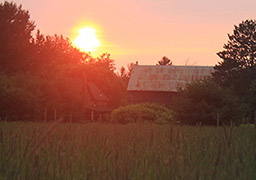Over our last two blogs in this series, we have overviewed the health benefits of zinc and iron, and illustrated how our local Ontario Quinta Quinoa has higher measures of these nutrients compared to commercially available quinoa imported from Peru and Bolivia. There are many other nutrients that we’ve seen positive differences in with Quinta Quinoa, one of these is a not so well known mineral, copper.
Copper is a trace mineral that is essential to the proper use of iron in your body, as it is a key component of many enzymes and proteins. Copper helps the body create red blood cells, and maintains health in many bodily systems, including nerves, immune, blood vessels and bones. Since copper helps to create blood cells and maintain healthy bones, a lack of adequate copper in the diet can lead to anemia and osteoporosis, respectively.
Because of its link to iron, recommended daily intakes of copper are increased for women during pregnancy/lactation. For adults aged 19 and older, the daily copper requirement is 900mg.
Don’t discount the benefits of copper! Although only required in small amounts, copper helps prevent premature aging and increases energy production. It also helps to keep connective tissue, hair and eyes healthy.
Imported quinoa, mainly from Peru and Bolivia, on average contains 3.5-5mg/g of copper (See graph on the right). At Katan Kitchens, we’ve been growing and researching quinoa in Ontario for the past four years, and through preliminary nutrient analyses of our crop, have discovered quinoa grown in Ontario has a more complete nutrient profile than quinoa grown in South America. This is again seen with copper, where our Quinta Quinoa grown across Ontario is up to three and a half times higher in copper (10-15mg/g). While there’s no recommended daily intake for copper, its link to iron makes it an important catalyst in the body.
We believe the higher mineral content is due to a combination of our climate, the amazing nutrient-rich Ontario soils, as well as the unique, non-GMO, naturally-bred variety of quinoa seed we are growing.
So we’ve now shown that Ontario-grown Quinta Quinoa is higher in zinc, iron and copper compared to commercially available imported quinoa. But it doesn’t stop with the minerals.
Stay tuned for our next blog on… protein!
Sources:
http://www.fao.org/quinoa-2013/what-is-quinoa/nutritional-value/en/
http://ods.od.nih.gov/News/Copper.aspx
http://www.nlm.nih.gov/medlineplus/ency/article/002419.htm
http://www.nlm.nih.gov/medlineplus/ency/article/002353.htm
http://www.agriculturejournals.cz/publicFiles/06732.pdf


